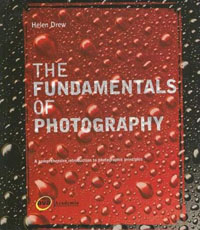ART 291: Intro to B&W Photography
University Mission
The mission of Abilene Christian University is to educate its student for Christian service and leadership throughout the world.
Course Description
Introduction to the basic principles of photography. As an art course, in addition to the technical aspects of image making, we will also be concerned with aesthetic and formal qualities of photographs. We will use our critiques to delve into the “reading” of images, looking at concept and content. Along the way we will talk about the history of photography from the Daguerreotype to current technologies.
Course Objectives
This course aims to develop a broad practical knowledge of all aspects of black & white photography and darkroom techniques. Emphasis will be placed on the creative and visual potential of B&W photography through consideration of darkroom chemistry, printing papers and advanced printing techniques.
The objective of this course is to give the students a good working knowledge of black and white photography along with practical hands-on experience.
At the conclusion of the course the student will be able to:
– Learn about materials and equipment necessary to make quality photographs.
– Show proficiency in camera usage and vocabulary
– Black and white film development and making black and white prints.
Textbook

The Fundamentals of Photography
by Helen Drew

Basics Photography 01: Composition
by David Prakel
Activities
1) Reading of text books, handouts, articles.*
2) Class lectures, demonstrations and critiques.*
3) Photographic field assignments.
4) Use of 35 mm cameras and lenses.
5) Developing B&W prints with different techniques/effects.*
6) Online participation, comments on class-blog and posts.*
*Online activity: you are expected to leave at least ONE comment every 3-photographer of the week posts. Comments written after Nov 10th won’t be counted as part of online activity.
Supplies
There will be a course charge that will cover photo papers, chemicals (developer, stop bath, fixer, and toning), black and white film, and miscellaneous materials supplied by the Art & Design Department. Although expensive, it is to the student’s advantage to possess his or her cameras. With care these items should last many years. Other basic supplies/services may still need to be purchased by the student such as film developing, frames and mattes.
The Art & Design department has a few SLR cameras available for students to check out based on demand.
Total charges: $95.00
Cell Phones and Beepers
Electronic devices (cell phones, PDAs, etc.) may be used in class with caution. Disruption of the class by the sound or use of cell phones, texting, speaking and paging devices are forbidden. A student facing the responsibility of receiving an emergency message by one of these means must notify the instructor at the beginning of class, and may leave the device on.
Departmental Policies
In Fall and Spring semesters:
3 unexcused absences from class are allowed in courses that meet twice a week (TR), and 4 are allowed in classes that meet three times a week (MWF).
After these absences have been used, grade penalties will be assigned as followed:
1. After 1 absence, students will have their course grade lowered by one letter grade, 2 absences, two letter grades.
2. Students who have more than 2 absences will be given a failing grade in the class (excused absence are death in the immediate family, documented illness, official ACU-sponsored trips).
3. Arriving tardy 3 times equals one absence that counts against the permitted ones.
4. Students who participate in official University activities (athletics, debate, band, etc.) must provide the required University form one week in advance.
5. Leaving class early without permission from the instructor will be counted as a class absence.
Dress Code
Please follow the dress code outlined in your Student Handbook. You may be asked to leave class if you are not dressed according to the guidelines. Thanks for your cooperation.
Late work policy
Late work will be accepted, however student will be penalized 15 points on assignment. (and student won’t be able to participate on project critiques)
Please do not wait until the end of the semester to try to work out specific problems. Come by and talk to me to make arrangements as problems arise.
Grading Factors
The final grade will be equally composed of 5 studio projects, and class participation (exercises). In Photography classes a scale will be used as follows:
Projects – 4 x 100 = 400 points possible
Exercises – 2 x 100 = 200 points possible
Class participation* = 100 points possible
•Total possible points 700
*Class participation will be averaged by those activities.

Add a Comment
You must be logged in to post a comment.